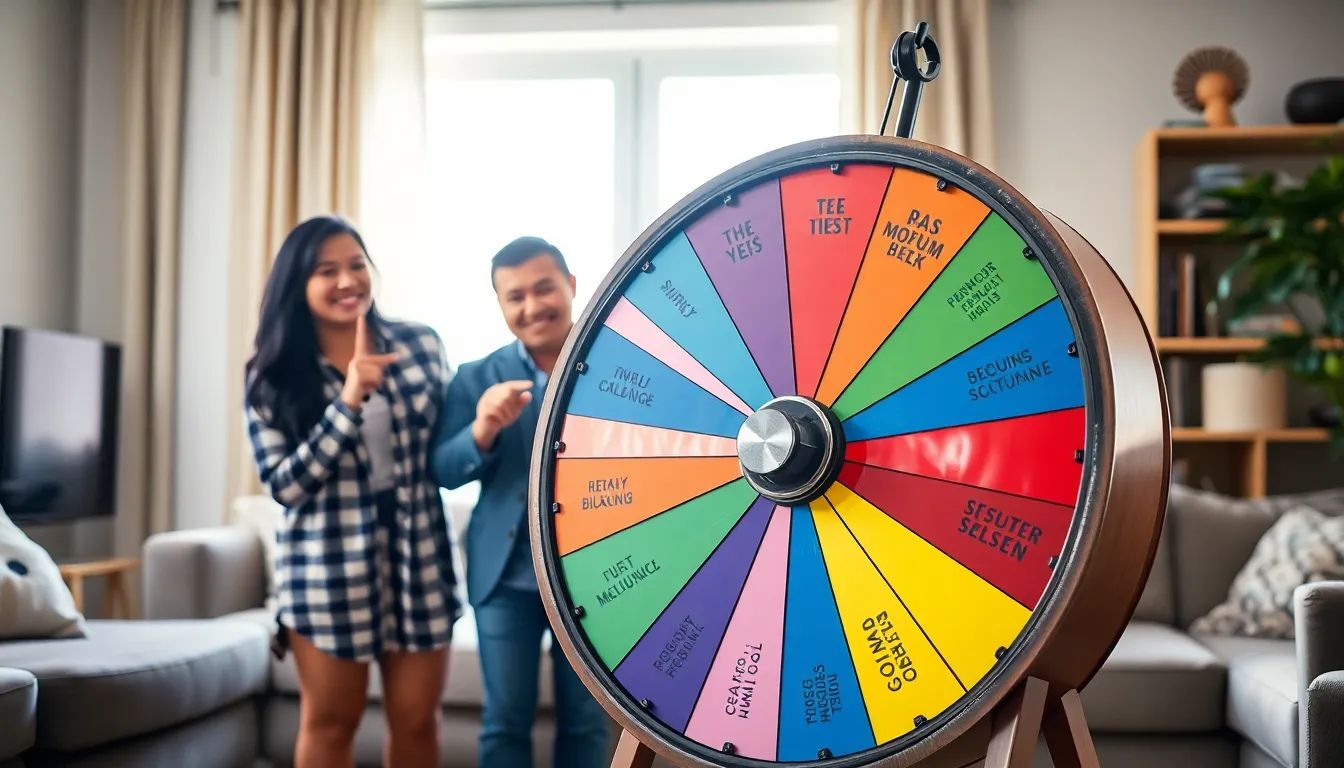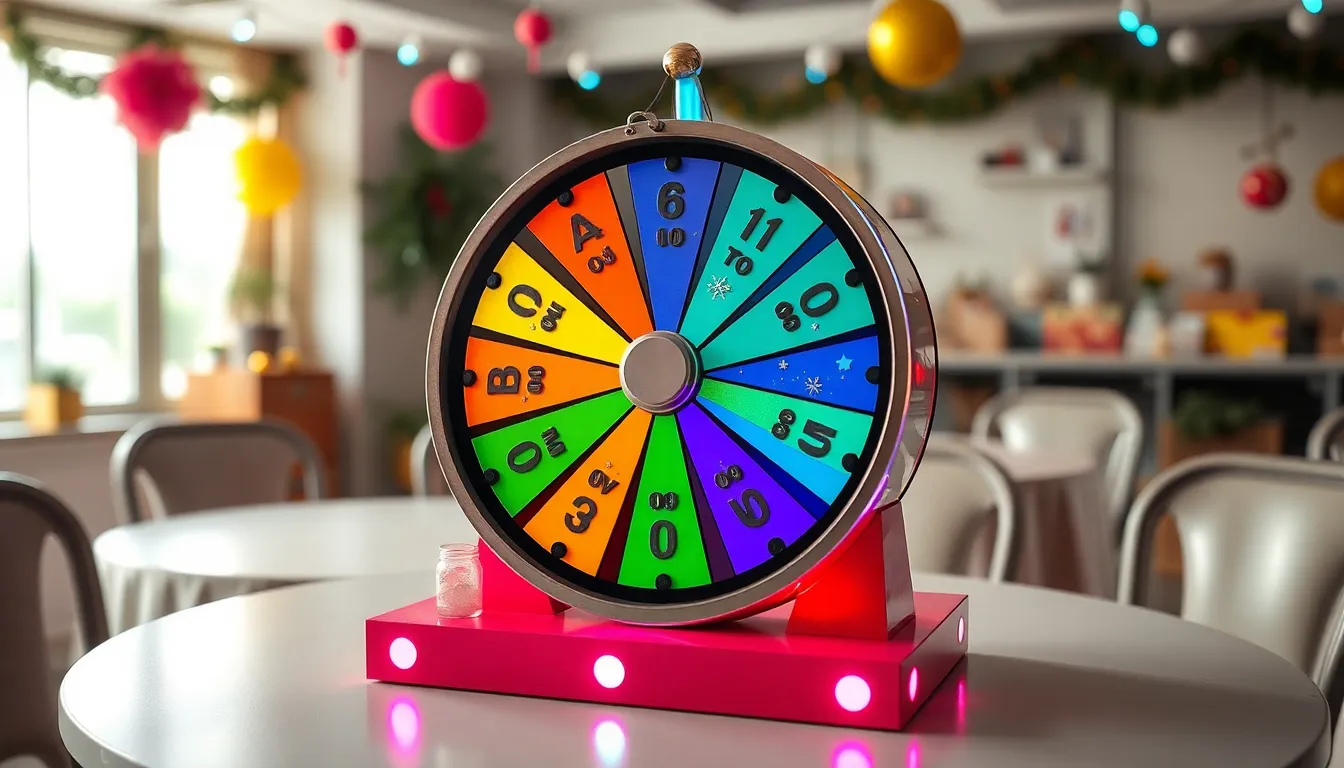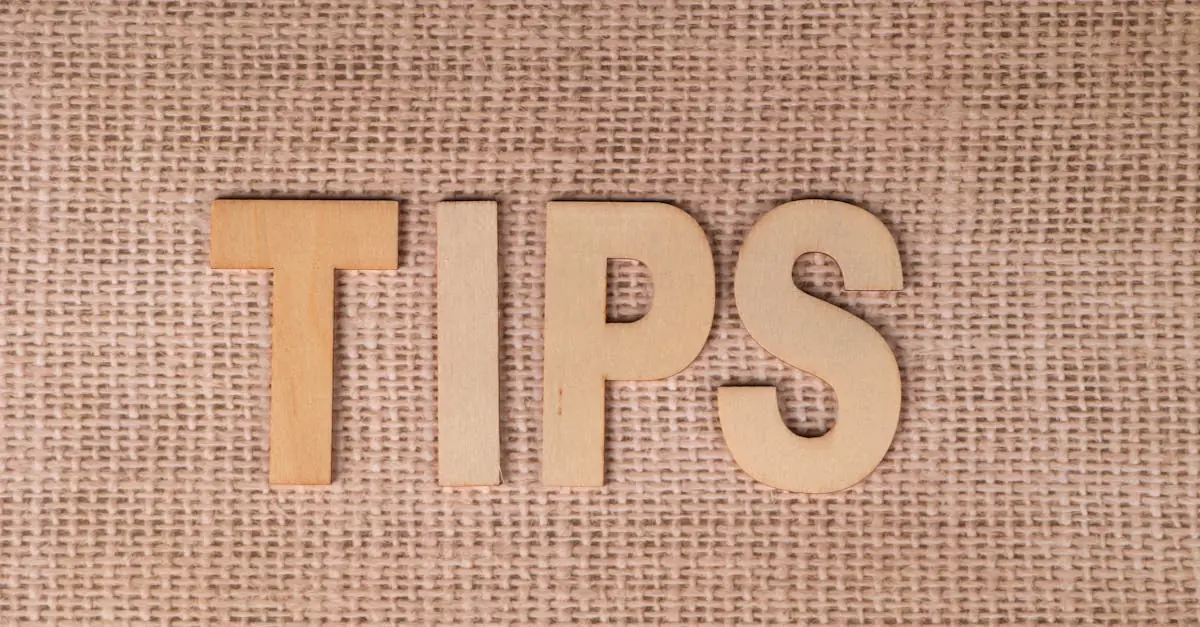Imagine spinning a colorful wheel and watching the excitement unfold as fortunes change in an instant. Now, what if you could bring that thrill into your own home? Creating a DIY Wheel of Fortune isn’t just a fun project; it’s an opportunity to unleash creativity and spark joy at parties, game nights, or family gatherings.
With just a few materials and a sprinkle of ingenuity, anyone can craft a wheel that’s not only eye-catching but also a source of endless entertainment. Whether you’re a crafty pro or a novice with a hot glue gun, this project promises to be a hit. So grab your supplies and get ready to spin your way to fun—who knows what fortunes await?
Table of Contents
ToggleOverview of Wheel of Fortune DIY
Creating a DIY Wheel of Fortune offers a simple way to add excitement to various events. Materials needed for the project include a sturdy base, a wheel, and colorful sections for easy visibility. Participants can customize each segment with engaging prizes or challenges to enhance gameplay.
Crafting the wheel allows flexibility in design. Users can paint the wheel in vibrant colors or add decorative elements to match the event’s theme. The construction process involves basic tools, making it accessible for all skill levels.
Spinning the wheel creates anticipation and fun for everyone involved. Establishing rules for gameplay helps maintain order during events. Players can compete for unique prizes or complete amusing tasks based on where the wheel lands.
Setting up the wheel is straightforward. Users can position it prominently at parties or game nights to ensure maximum visibility. This placement draws attention and encourages participation among guests.
The DIY approach also promotes creativity. Individuals can modify the wheel design or gameplay mechanics to suit their preferences. Each creation becomes a unique reflection of the host’s style and event goals.
Engaging in this project can foster bonding among family and friends. Collaborative efforts in designing and building the wheel strengthen relationships. In addition, shared laughter and enjoyment are guaranteed when spinning the wheel during events.
Overall, a DIY Wheel of Fortune presents an entertaining activity that combines creativity, gameplay, and social interaction. Participants can look forward to memorable experiences, making it a worthwhile addition to any gathering.
Materials Needed
Creating a DIY Wheel of Fortune involves gathering a few key materials that make the project feasible and enjoyable. The right components can help in crafting a wheel that stands out during gatherings.
Essential Components
- Sturdy Base: A strong base supports the wheel, ensuring stability during use. Plywood or a heavy cardboard piece works effectively.
- Wheel: An essential part, the wheel can be made from cardboard, foam board, or a pre-made spinning wheel. The material choice affects durability and appearance.
- Colorful Sections: Brightly colored segments create visual appeal and designate different outcomes. Use paint or colored paper to differentiate prizes or challenges.
- Spinner Mechanism: A simple, functional spinner, like a paper clip or a store-bought spinner, allows for a smooth rotation. Consider how easy it spins when selecting options.
Optional Accessories
- Decorative Elements: Adding stickers, glitter, or markers enhances the aesthetic and reflects personal style. These accessories can match the party theme or event.
- Sound Effects: Incorporating a sound element can add excitement. Small bells or an electronic sound device may indicate when the wheel stops.
- Markers and Prizes: Customizing the prizes enhances gameplay engagement. Small items like candy, coupons, or playful tasks encourage participation.
- Lighting: LED string lights or battery-operated lights attract attention and create an inviting atmosphere. Illuminate the wheel to enhance excitement and visibility during the event.
Step-by-Step Guide
Creating a DIY Wheel of Fortune involves several straightforward steps. Following this guide leads to a fun and engaging project.
Designing the Wheel
Begin by sketching the wheel’s layout. Aim for equal segments to ensure fairness during gameplay. Choose vibrant colors for each section to attract attention. The design reflects the event’s theme, enhancing visual appeal. Craft creative titles or fun challenges for each segment, ensuring they fit within the segment’s space. Consider using stencils for neatness and consistency in lettering. These steps create a distinctive wheel to excite players.
Constructing the Base
Select a sturdy base material like plywood or heavy cardboard. Ensure the base is large enough to support the wheel effectively. Cut the material into a circular shape matching the desired wheel size. Use strong adhesive or screws to secure the wheel to the base for stability. Adding weight, like sandbags or bricks, under the base can prevent tipping during spins. This solid foundation ensures smooth and safe operation, providing an enjoyable experience for all players.
Adding the Pointers and Labels
For pointers, use a sturdy arrow or a plastic spinner mounted at the top of the wheel. Ensure that it can rotate freely to indicate the results clearly. Label the segments with distinct titles using bold fonts or colorful markers. Each label should be legible from a distance, enhancing visibility during spins. Secure the labels with adhesive to prevent peeling during use. These components make spinning the wheel easy and interactive, contributing to the overall enjoyment of the game.
Tips for Customization
Customization plays a vital role in creating a unique Wheel of Fortune. Tailoring the design enhances engagement and ensures it fits any occasion.
Personalizing the Theme
Selecting a theme adds personality to the wheel. Choose vibrant colors that reflect the party’s mood, whether it’s a birthday bash or a corporate event. Incorporate themed images or symbols into the wheel segments for visual appeal. Add catchy phrases related to the theme above each prize or challenge. Customizing the font style brings an extra flair, ensuring that all text aligns with the theme.
Techniques for Durability
Ensuring the wheel lasts requires using sturdy materials. Plywood or thick foam board provides reliability, crucial for heavy usage. Secure the components with strong adhesives and screws to prevent wear and tear. Consider adding a protective coating to the wheel surface to guard against scratches and spills. Additionally, using a reliable spinner mechanism contributes to smoother operation, enhancing gameplay experience. Reinforcing the base with weighted materials ensures stability during enthusiastic spins.
Conclusion
Creating a DIY Wheel of Fortune is an exciting way to elevate gatherings and foster connections. This project not only encourages creativity but also ensures that everyone can participate in the fun. With simple materials and a bit of imagination the wheel can become a centerpiece of entertainment.
The joy of spinning the wheel and the thrill of anticipation add an element of surprise to any event. By personalizing the design and gameplay participants can tailor the experience to their liking. Ultimately this DIY project brings people together creating lasting memories filled with laughter and enjoyment. Embracing the challenge of crafting a Wheel of Fortune is a rewarding endeavor that enhances social interactions and enriches celebrations.









